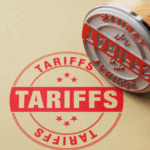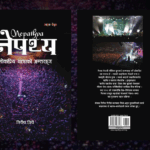During Nepal’s Maoist conflict period, my company, Nepa-laya managed several editions of the Peace Concert Tours across the war-torn country. Our headlining band was Nepathya. In 2003, we were scheduled to perform in Dang. The district where the Maoists had attempted their first successful attack on an Army camp. The air was tense. Though a curfew was not announced officially, an unofficial curfew was followed by everyone from dusk to dawn. All shops would close in Tulsipur bazaar as the sun set and everyone would rush home before dusk. The situation was not at all favorable to organize a show. But the unexpected happened – over 20,000 people turned out for the show. The media reported people’s participation as their symbolic referendum for peace. We were later told that after the show, shops in the area had started to open till 7 pm. The market had regained confidence. That day, I was reassured of the power of music. The potential power it holds to keep hope alive among people during times of distress.
I have followed Bono and his band U2 closely. While music was one reason, the main reason was their social imagery. Reading about how Bono had successfully played a role in bringing Google and Facebook to Ireland was a testimony to how a nation can benefit from the soft power of celebrity artists.
Countries like Ireland were lucky to have citizens like Bono, while others spent a fortune to build such power. Norway’s investment in the Ibsen brand, and Jazz music in Nepal are examples of how nations are working on rebranding their images through cooperation with the creative industry.
In another instance, while attending the Frankfurt Book Fair in 2012, I was surprised to see the scale at which New Zealand was promoted there. Literary and cultural representation was highlighted through events and a special pavilion was made to showcase the Kiwis. When asked how the nation was selected as the guest of honor, a simple answer followed – “You need to pay.”
In 2017, Netherlands and Flanders became the guest of honor. As per the agency working on the project, the project cost was EUR 5.7 million. Among other accomplishments, the affiliation and investment got 300 Dutch books translated into the German language, thereby proving to a be a justified investment. I cannot see Nepal going to this level of diplomacy and promotion soon. However, it could start with the state showing an interest in utilizing its already allocated budget to empower events that have gained international repute. Film festivals like Films South Asia, KIMFF, and music festivals like Kathmandu Jazz could be a few examples.
I recall meeting an official related to the Nepal Tourism Board at an event. I was sharing with him how Nepathya promoted tourism through its songs, words, and visuals screened at concerts. Before I could finish, he bluntly said, “If you are looking for sponsorship, our budget for this year has already been used.” I softly replied, “We are doing fine without your sponsorship. As we have been promoting Nepal within Nepal and beyond through our shows, please feel free to share your views on how you can utilize us better. For free!” He just smiled and left. I have yet to hear from him.
While Nepathya was performing at the Warfield Theater in 2016 in San Francisco, I remember the venue manager telling me, “It was amazing to see how the Nepali crowd reacted to your show. It reminds me of watching K-Pop 10 years ago. 10 years ago, there were only Koreans attending, 5 years ago it was half Korean. And now we see almost no Koreans.”
The Korean Wave through its entertainment content started with a few TV dramas making it to the Chinese TV, CCTV in 1997. In 2003 and 2004, Japan’s TV, NHK aired a few Korean Dramas. Soon, the demand for Korean drama extended to more than 90 countries. This contributed to the promotion of Korean culture, fashion, music, food, and consumer goods among foreign viewers.
With the increasing trend of migration of Nepali people to first-world nations which include Australia, Japan, Canada, the USA, the UK, and European nations, the Nepali diaspora will surely grow. There will certainly be creative minds making their way to recognition in their respective capacities. These immigrant populations can be expected to expand the horizons for Nepal in the future as the Indian and Chinese diaspora did and are doing for their respective nations.
In 2008, humans crossed the mark towards being a predominantly urban species with more than half of the global population now living in cities rather than rural areas. Along with this, with half the population being under the age of 25, the choice of migration will no longer remain limited to immediate financial self-interest. The value of creativity and connectivity the city offers will be valued more over employment and security. This is a typical global phenomenon being observed among the youth. We may not be able to compete with the developed nations in terms of employment and security. But, as John Hartley states, we may have a competitive advantage if we start investing in connectivity and creativity.
Along with other economic indicators, it may also be time for us to consider improving on the Bohemian Index. The Bohemian index is a location quotient that measures the percentage of bohemians in the area as per occupational data compared to the national population. The list of professions under Bohemians includes authors, designers, musicians and composers, actors and directors, craft artists, painters, sculptors, artists, photographers, dancers, performers, and related workers.
Soon, a city with a higher Bohemian index will be considered a suitable one for the creative industry to thrive. David Parrish explains creative industries as businesses that originate through creativity, which has the potential and capacity to create jobs, and wealth and regenerate economies. So, the mayors of our cities could start exploring ways to rate high on the Bohemian index which will hopefully trigger the reason for skilled national and international bohemians to visit and live.
Kiran Krishna Shrestha, a distinguished publisher and music promoter, leads Nepalaya in managing music, publishing books, and producing independent non-fiction works. Since starting Nepalaya in 2001, he has managed Nepathya since 2002. A Westcliff University graduate, Kiran's expertise in project management, digital marketing, and environmental advocacy has greatly influenced Nepal's cultural landscape.





